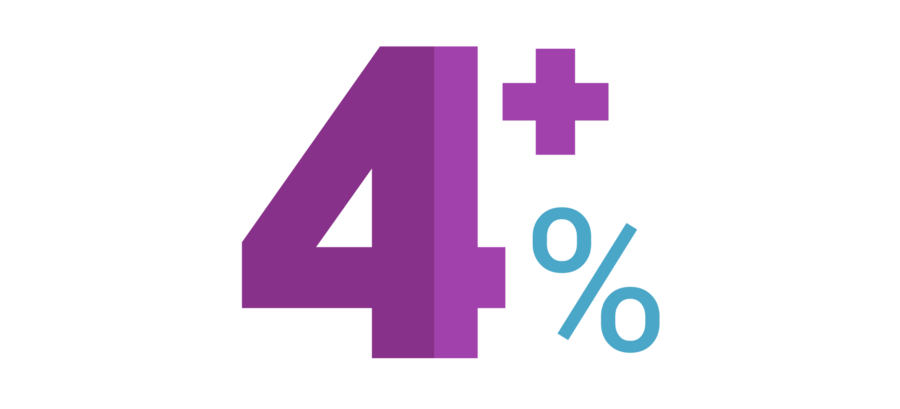
Enterprise Expects to Defend Its Distribution
Enterprise Products Partners (EPD) reported earnings on April 29. Management reaffirmed their commitment to the distribution, which has been increased for 21 consecutive years:
Finally, I'd like to iterate our financial objectives as to defend and maintain our distribution, our strong balance sheet, and our debt rating; maintain ample liquidity; and continue to high-grade and invest in projects underwritten by high credit quality customers, long-term fee-based contracts, and underpinned by solid long-term fundamentals.
– Co-CEO Randy Fowler
However, Enterprise's high yield reflects the uncertain environment facing midstream services providers in the months ahead.
Low commodity prices, limited storage, and coronavirus-related demand headwinds have caused oil and gas production to begin falling.
In fact, the number of oil and gas rigs operating in the U.S. is projected to reach its lowest level in at least 80 years this week.
U.S. oil production has already fallen more than 9% since reaching a record high in mid-March, and natural gas output is down over 5% since its all-time high in November.
Natural gas liquids (NGLs), a byproduct of natural gas processing, are exposed to the same trends. And refined products volumes "are coming down in a way we've never seen before," according to Kinder Morgan (KMI).
Government-mandated shutdowns and restrictions on travel are beginning to ease, but it's unclear how quickly demand will return and supply stockpiles will be drawn down. For now, the near-term outlook for production remains dim.
This is a concern for midstream companies because falling throughput could reduce the utilization of their assets and hurt their cash flow.
Enterprise's business is very diversified with assets connected to nearly every major U.S. shale basin and touching many different commodities, so it will be impacted by these trends.

On its earnings call, Enterprise helped clarify the amount of volumetric risk facing its business.
About 80% to 90% of the company's earning are fee-based. Only about 25% of these earnings come from businesses with volumetric risk, such as gas gathering & processing and petrochemicals.
The rest of Enterprise's fee-based earnings are from take-or-pay commitments (45% to 50% of fees) or stable businesses such as storage and wholesale residential deliveries (20% to 30%).
In other words, around 60% of Enterprise's overall earnings presumably have minimal volumetric or commodity price risk. This was encouraging to hear since Enterprise's payout ratio last year was also about 60%.
As long as those more stable businesses remain steady, Enterprise's distribution should remain reasonably covered by fee-based cash flow regardless of what happens with future throughput or commodity prices.

Even in parts of its business that have volumetric risk, Enterprise believes it has a relatively resilient profile:
I think maybe on the [gathering and processing] side, we'll see some volume decline on that side. But in terms of the customers that we deal with, if you look at the barrels that are going to be cut out, the barrel that's the highest cost to produce will be first. The second barrel that will probably get cut out is the highest cost to get to market, and then the third will be some sort of a quality issue.
So if you look at our system and our customer base, I think we're -- I don't want to say we'll be the last ones to see reduction in volume, but I think we're pretty well positioned in terms of our customer base to keep on producing it at some sort of level.
– Chief Commercial Officer Brent Secrest
Aside from falling throughput, counter-party credit risk is another concern for midstream investors.
Take-or-pay contracts are only a reliable source of earnings if customers are financially healthy enough to honor their terms, and few producers are earning a profit in today's pricing environment.
Enterprise's top 200 customers represented 96% of 2019 revenues. Only 11% of revenues from its top 200 customers were from independent exploration and production companies, which are under the most financial pressure.
78% of the revenues from its top 200 customers were comprised of investment-grade customers or those backed by a letter of credit. It will take time for the credit impact of the energy crisis to ripple through, but Enterprise remains well positioned.
Not surprisingly, management also believes that producers will still honor their take-or-pay contracts even if oil storage fills up and producers have no place to ship their crude.
We've looked at all our contracts, and we feel pretty comfortable that we're not going to have any issue with force majeures as it relates to price.
– Co-CEO Jim Teague
Regardless, Enterprise is hunkering down financially to remain as conservative as possible in this environment.
The firm now anticipates spending between $2.5 billion and $3 billion on growth projects this year, down from original guidance of $4 billion.
Management also reduced 2020 guidance for sustaining capital expenditures from $400 million to $300 million.
For context, Enterprise generated $6.5 billion of operating cash flow in 2019. If the firm's cash flow remained stable this year, Enterprise would retain about $2.6 billion after paying $3.9 billion in distributions.
That would nearly be enough to cover all of its growth spending and sustaining capex without requiring any external capital.
And growth spending is on track to decline to $2.5 billion in 2021 and $1.5 billion in 2022 based on sanctioned projects already approved, improving the outlook for free cash flow.
Cash flow will almost certainly decline this year, but barring widespread contract defaults, the deficit seems unlikely to endanger the distribution.
During the 2014-16 oil crash, Enterprise's cash flow from operations remained between $4 billion and $4.2 billion each year, and operational distributable cash flow (DCF) per unit only fell about 6% from 2014 through 2016.
Thanks to the firm's general resiliency, manageable spending plans, and solid liquidity, Enterprise does not expect to have a need to return to the debt capital markets in 2020.
The company has approximately $2 billion of unrestricted cash on hand and total liquidity of about $8 billion. Enterprise's only remaining debt maturity in 2020 is a $1 billion maturity due in September.
Even if Enterprise's cash flow fell 20% this year, we estimate the firm would only need about $1.5 billion to cover all of its spending and the current distribution.
That seems quite manageable given the firm's liquidity, especially since Enterprise's leverage in such a scenario would likely remain below the peak it reached during the 2014-16 oil crash.

The worst of the headwinds remain ahead of the midstream industry, so it's hard to read too much into this quarter's results and management's comments.
For example, Plains All American Pipeline LP (PAA) reported earnings earlier this week and said it believes crude oil production in the Permian (the largest oil-producing basin in the U.S.) could be down 15% to 20% this year, reaching trough levels in June and flattening out from there.
But based on what we know today, our thoughts on Enterprise haven't changed since our March note when we concluded:
For example, Plains All American Pipeline LP (PAA) reported earnings earlier this week and said it believes crude oil production in the Permian (the largest oil-producing basin in the U.S.) could be down 15% to 20% this year, reaching trough levels in June and flattening out from there.
But based on what we know today, our thoughts on Enterprise haven't changed since our March note when we concluded:
Barring unprecedented bankruptcies in the oil patch and an extreme and sustained downturn in U.S. energy production, Enterprise appears to have the balance sheet, distribution coverage, and scale to weather most storms.
We will continue monitoring the landscape for midstream services providers as the energy market evolves. Enterprise remains one of the strongest companies in the industry, but current unitholders need to be comfortable with the growing risks facing the space.



